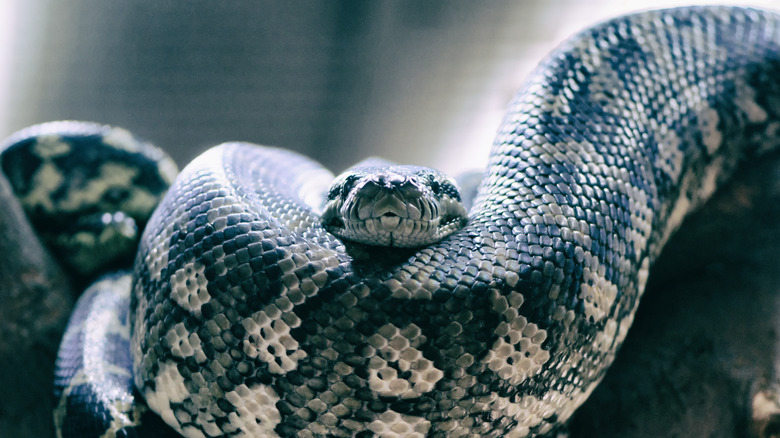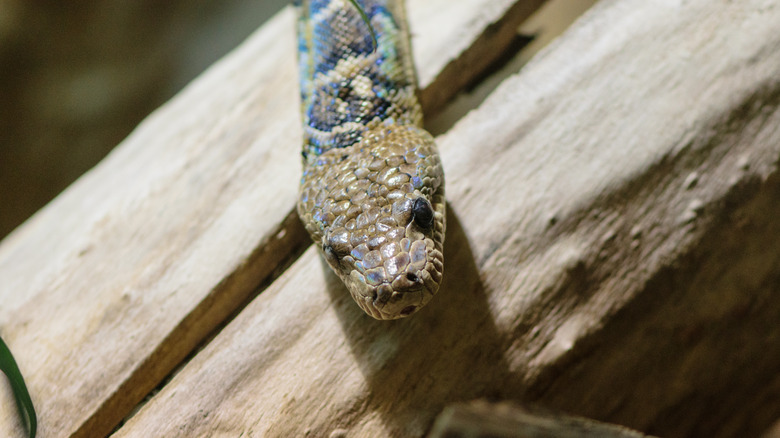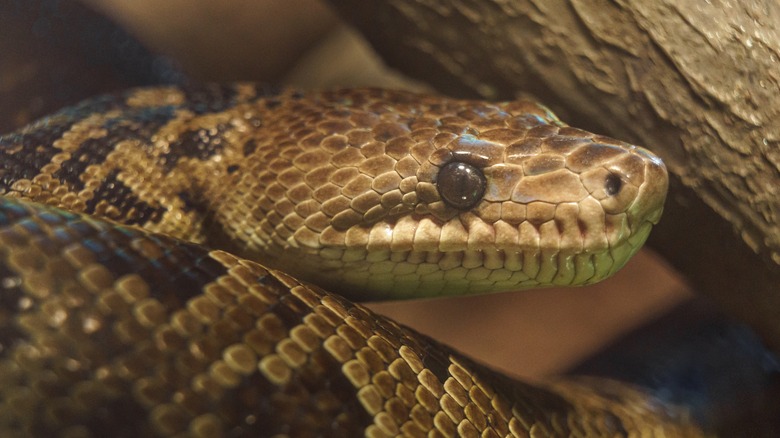Believe It Or Not, A Certain Snake Species Hunts In Packs
Snakes tend to be seen as solitary creatures. For a long time, it was thought that they rarely interacted with others of their kind unless they were gathering to breed, usually in the spring or fall. For the rest of their lives, they hunted and lived alone.
However, studies reveal this might not be the case, at least with some of the more common species. Rattlesnakes, which make up the genera you're scared to run into while hiking, have been observed participating in parental care and sharing dens. Elsewhere, a 2020 study published in the Behavioral Ecology and Sociobiology discovered that eastern garters (Thamnophis sirtalis sirtalis), snakes you might find in your own backyard prefer to be with others of their kind. Not only that, they often have a few other reptiles they spend the majority of their time with and may even form cliques. These findings suggest snakes may be far less antisocial than once believed.
In 2017, the belief that snakes hunted on their own was questioned when a scientist in Tennessee found that at least one species might actually hunt together in packs. Their research focused on the behavior of Cuban boas (Epicrates angulifer) in Desembarco del Granma National Park on the east side of Cuba. At the end of his observations, he found that these boas not only apparently work together to catch their prey, but are actually much more effective when they do so.
What the study found about Cuban boa hunting methods
Scientist Vladimir Dinets from the University of Tennessee, Knoxville made the discovery. His 2017 study was published in Animal Behavior and Cognition and documented his findings after he spent eight days observing the relationship between the Cuban boas and their prey: the Jamaican fruit bats (Artibeus jamaicensis).
During his research, he noticed that the snakes would move toward the entrance of caves where the bats rested during the day. About 10 to 30 minutes before their prey woke to leave the cave, the boas would start to search for their ideal hunting spot. They also did the same shortly before dawn — 20 to 60 minutes before — as the bats returned to the cave. Dinets noticed that when the snakes moved to cover entrances, the Cuban boas often chose an entrance where there was already another snake.
This works well for them because of the way they catch their prey. They usually lie in wait until an animal comes into striking distance and then reach out to attack. With more snakes covering an entrance, there is a higher chance a bat will fly into the range of at least one of the snakes. Dinets' research showed that this method was an effective one, as it tripled the success for individuals compared to ones simply hunting individually. It also shortened the time snakes are out there trying to catch a bat.
Are Cuban boas really hunting in packs?
While the study had some pretty significant results, it's important to remember this is the first research of its kind. It does seem likely that the snakes were making the conscious choice to work together so they could have a better chance of catching their prey, but there may be some other factor not yet taken into account. It was also a fairly short study.
It's not always easy to prove animals are hunting together, especially with those not considered social. Species that live and spend most of their days in packs tend to chase prey together in a method called coordinated hunting, which requires the animals to consider each other's behaviors and actions. Without this consideration, they're simply hunting in the same space — not necessarily together. After all, you wouldn't say a timber rattler and a bobcat are participating in coordinated hunting just because you can find both creatures in the Adirondacks.
However, in Vladimir Dinets' study, it does appear that Cuban boas were working together in "packs" and exhibiting a form of cooperative hunting, despite not being considered a social species. The snakes appeared to actively choose to hunt in the same place as others of their kind, and were more effective for this decision. And, as Dinets said in a press release, "It is possible that coordinated hunting is not uncommon among snakes, but it will take a lot of very patient field research to find out."


